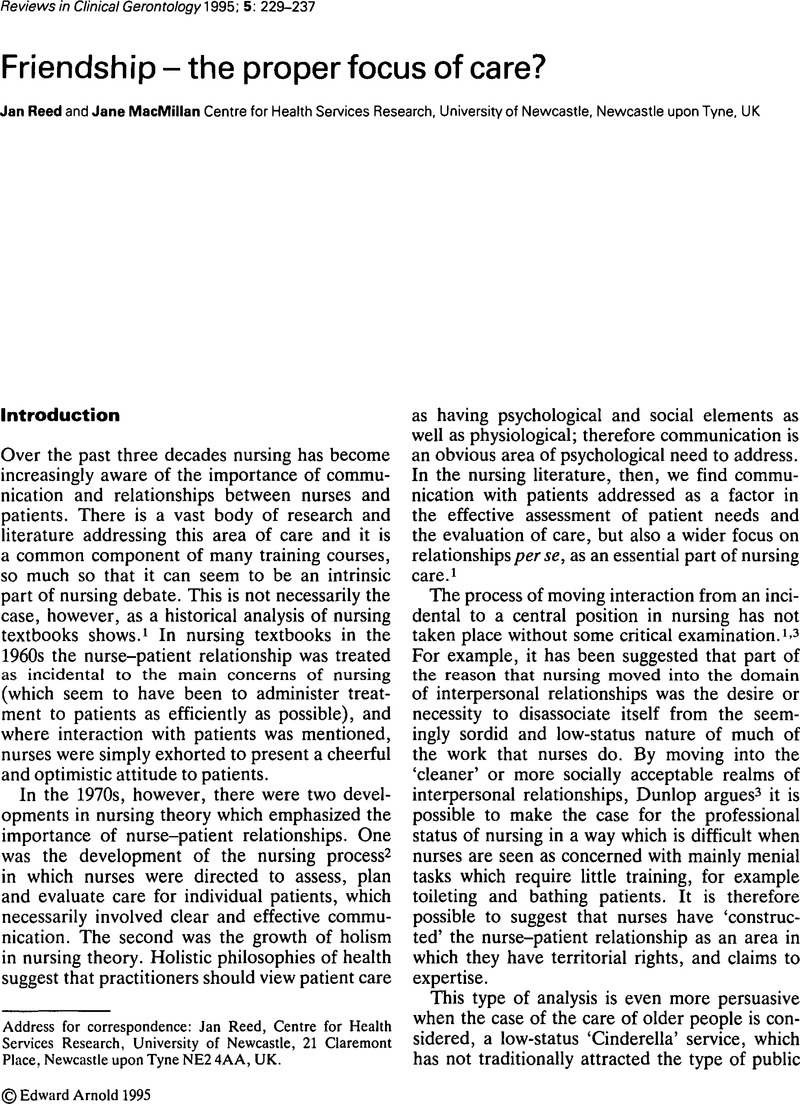Crossref Citations
This article has been cited by the following publications. This list is generated based on data provided by Crossref.
MCKEE, K. J.
HARRISON, G.
and
LEE, K.
1999.
Activity, friendships and wellbeing in residential settings for older people.
Aging & Mental Health,
Vol. 3,
Issue. 2,
p.
143.
Piercy, Kathleen W.
and
Woolley, Dorothy N.
2000.
Negotiating Worker-Client Relationships: A Necessary Step to Providing Quality Home Health Care.
Home Health Care Services Quarterly,
Vol. 18,
Issue. 1,
p.
1.
Coogle, Constance L.
Jablonski, Rita
Rachel, Jason A.
and
Parham, Iris A.
2008.
Skills-Enhancement Training Program for Home Care Providers: Implications for Redefining Quality Care.
Home Health Care Management & Practice,
Vol. 20,
Issue. 4,
p.
312.



